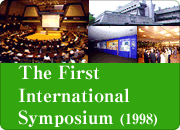The world annual production of rice exceeded 600 million tons in 2005 and has continued to grow every year since. Along with wheat and corn,rice is the major grain supporting people around the world,but interest in recent years has gone beyond rice as a food to explore its health benefits. From an epidemiological viewpoint,it has long been known that rice is good for human health. Moreover,the effect it has on heredity is now being discussed because of the differing disease structures between farming peoples and hunting peoples.
Nowadays,“polished rice” is the mainstream in rice as a food because of the taste,but much of its beneficial components are contained in the bran,which is removed in the milling process. Since long ago,rice bran has been used all over the world,which has lifted the importance of rice as a resource. From research into the beneficial components of rice and development of production technologies have come rice oil,inositol,ferulic acid,oryzanol and other uses. These constituents are widely used as foods,medicines and industrial materials,and have drawn increased interest in recent years for their effectiveness in the prevention and treatment of metabolic syndrome,diabetes,dementia,cancer and other diseases.
From this viewpoint,identifying the active mechanisms of rice components and researching possible new applications will certainly make greater use of rice as a natural resource and benefit people all around the world. This symposium was created to discuss rice not only from the natural sciences but also in terms of its environmental benefits and its cultural connotations as a farm product and food. It has been envisioned as a golden opportunity to look at and expand the culture of rice from a total perspective. One of the big expectations of constructively promoting the beneficial uses of rice in the many rice-growing nations of the world is the promotion of environment-friendly sciences on a global scale.
In Japan,rice growing began in the Middle Jomon Period (approx. 4,000 - 5,000 years ago),therefore the landscape of rice paddies that the Japanese people have tilled for millennia is considered the original landscape by the Japanese people. This symposium serves as a venue for international exchange amongst physicians,researchers and engineers from joint development projects by industry,government and academia that are searching for medicines,foods,feeds and other targets,and persons involved with the education and administration of rice. It will help promote research and development into the mechanisms and active benefits of components contained in rice and bran,and contribute to the expansion of rice culture in Japan and around the world.
Kishio Nanjo,M.D.
Wakayama Medical University
Chairman of the Symposium Steering Committee





